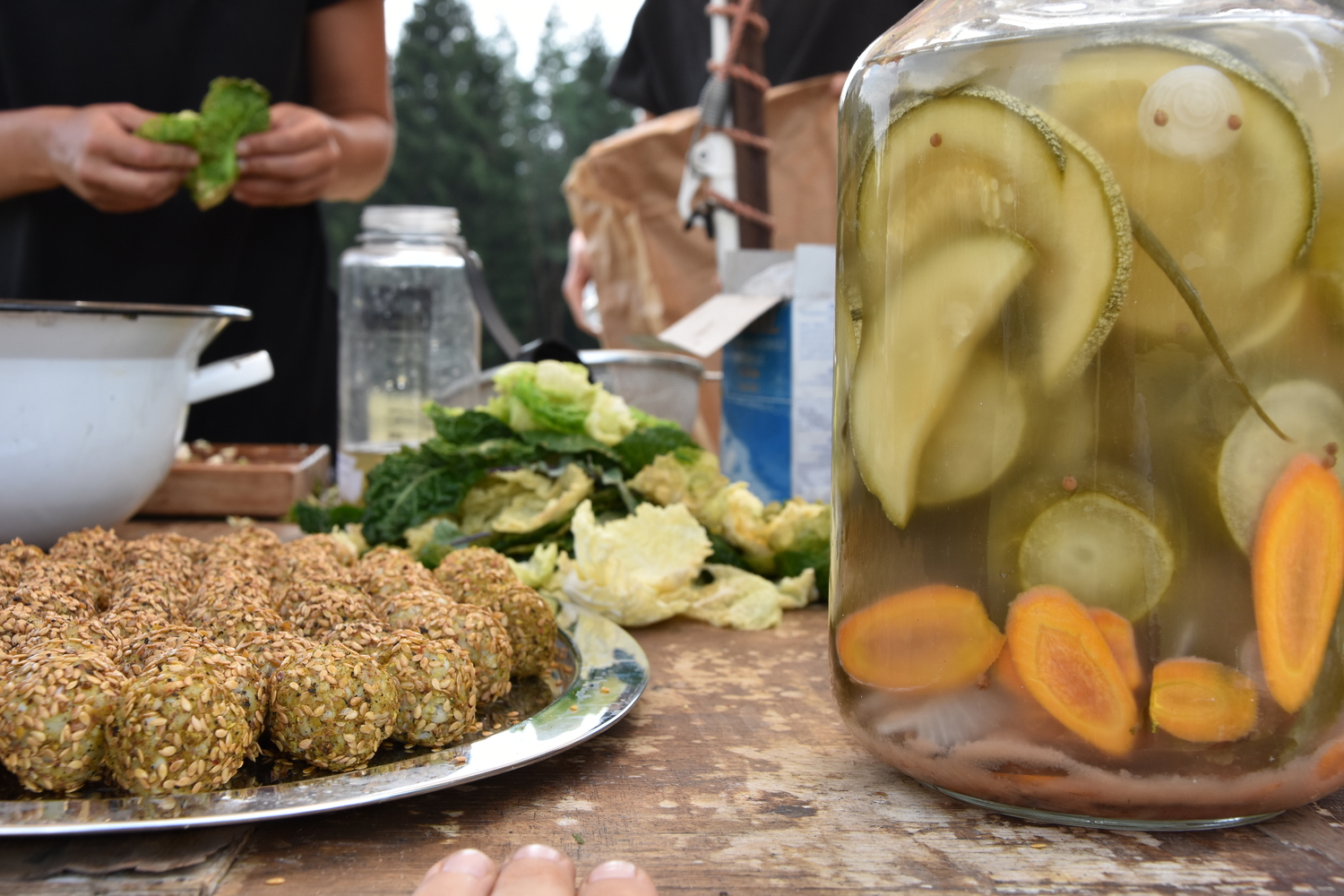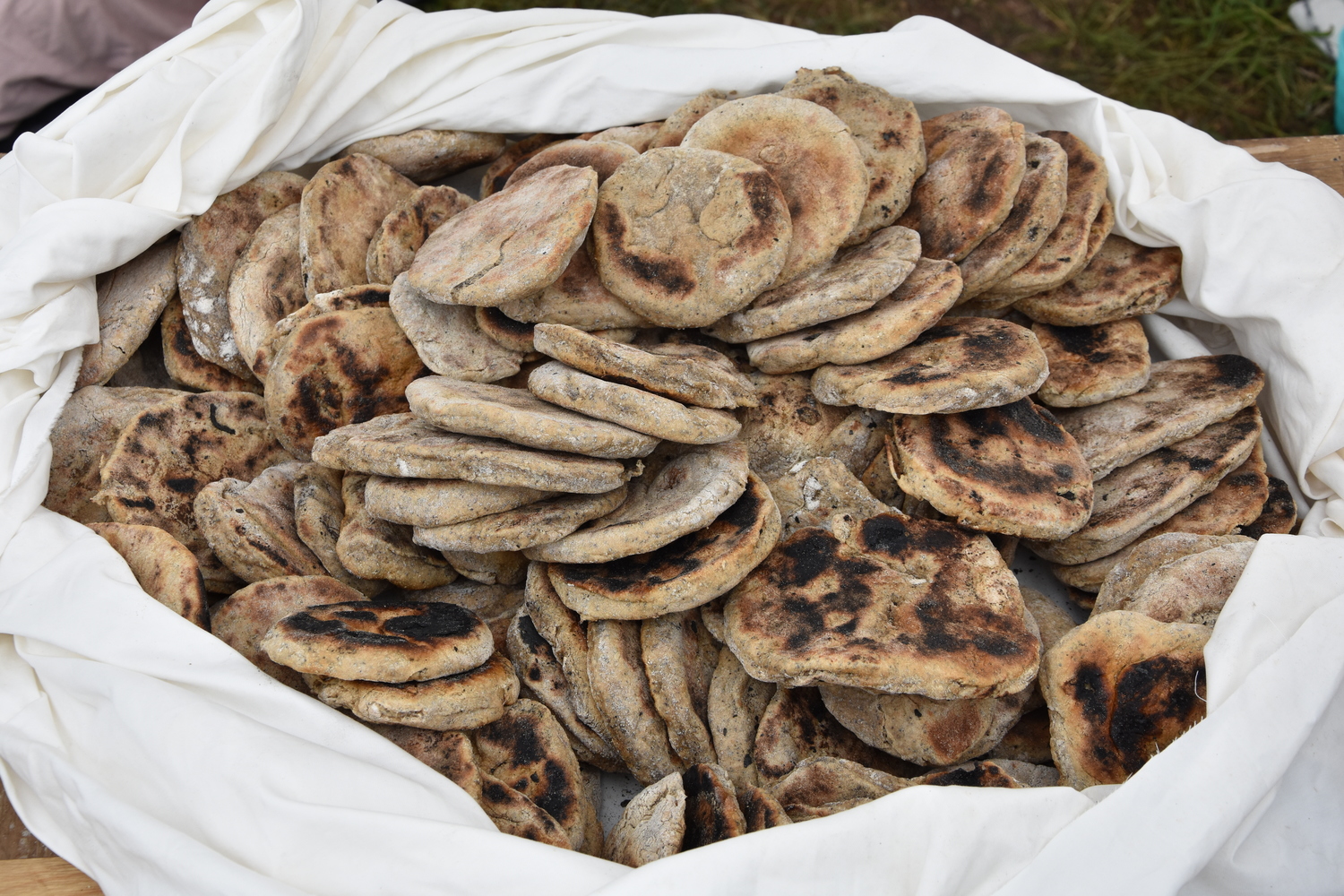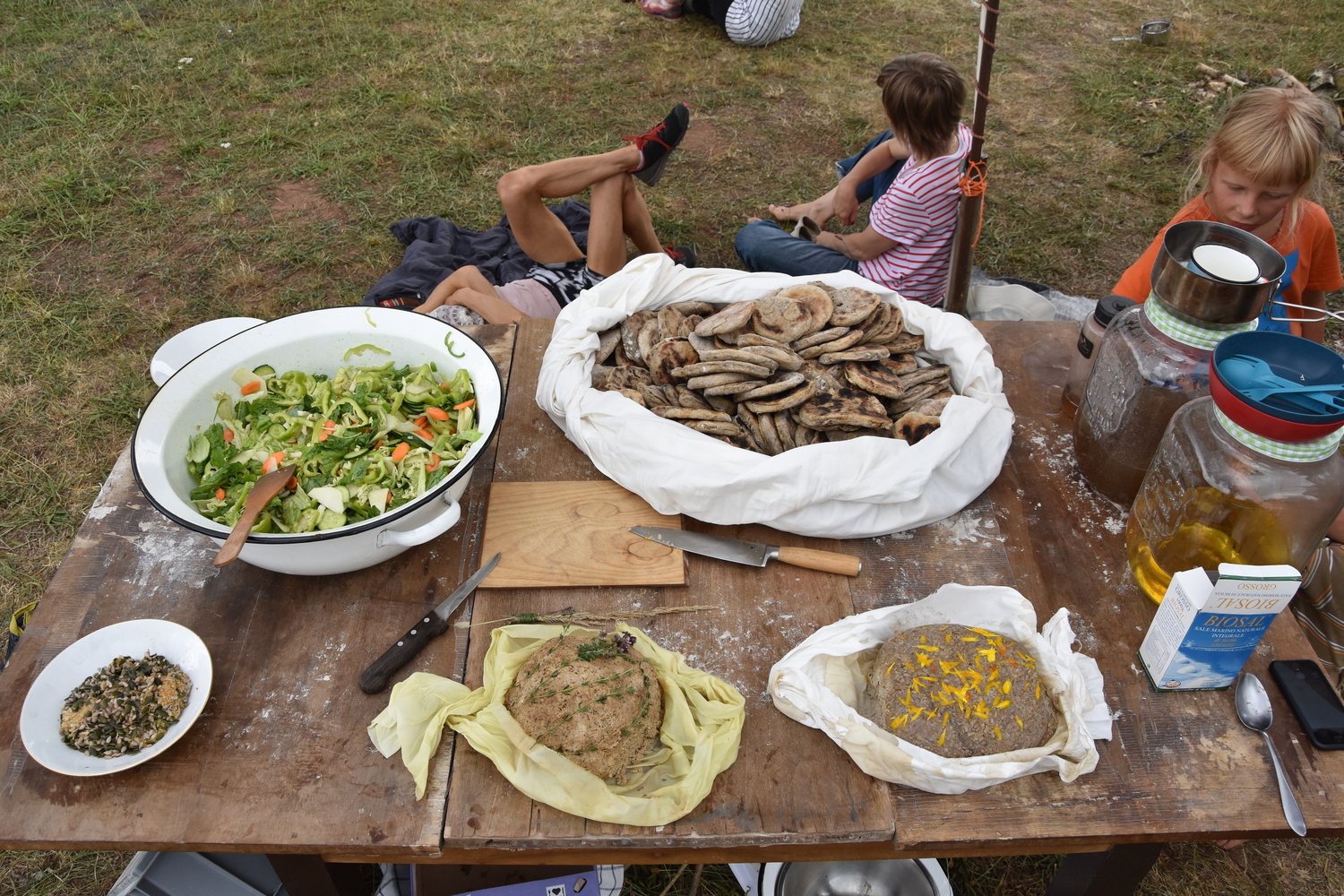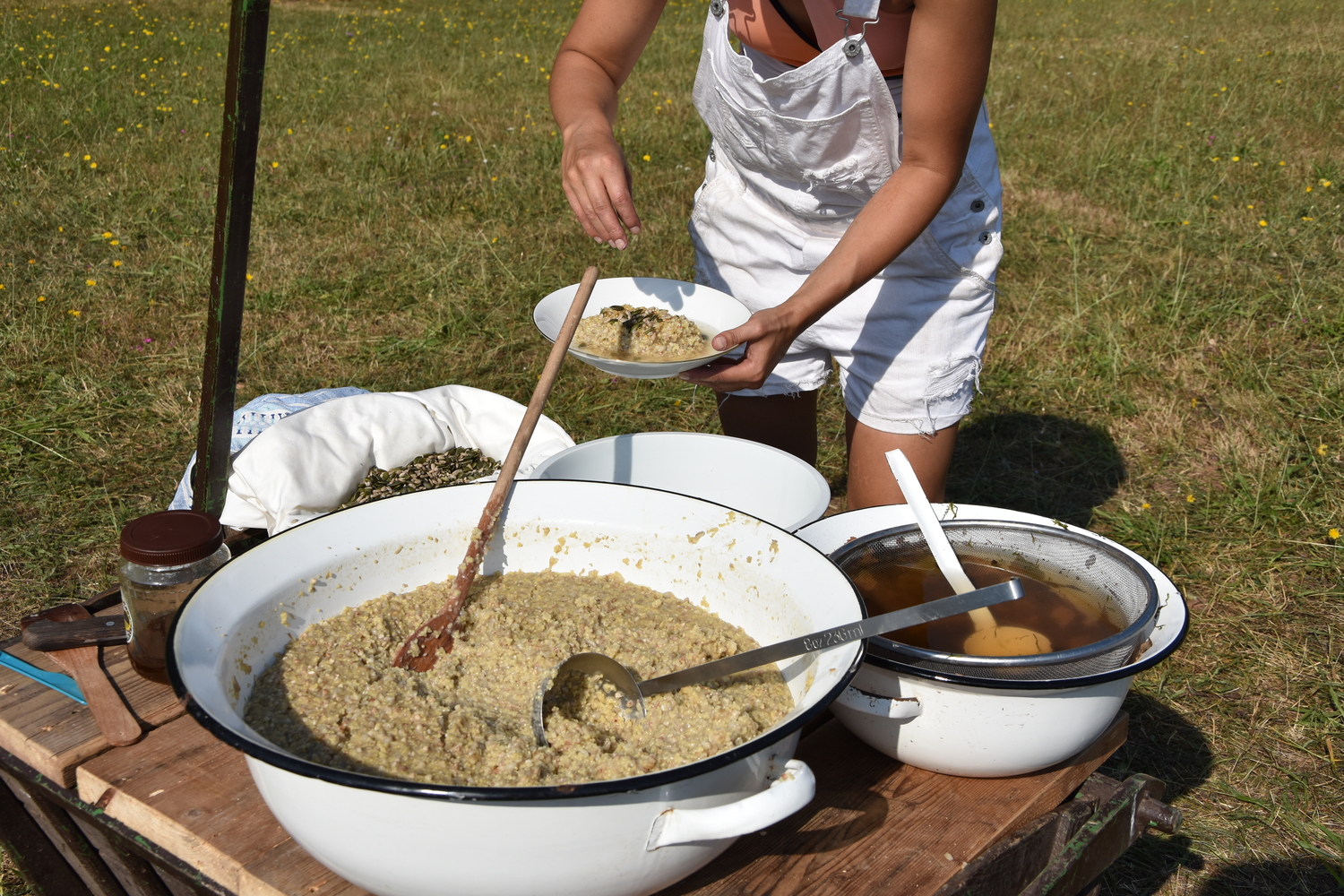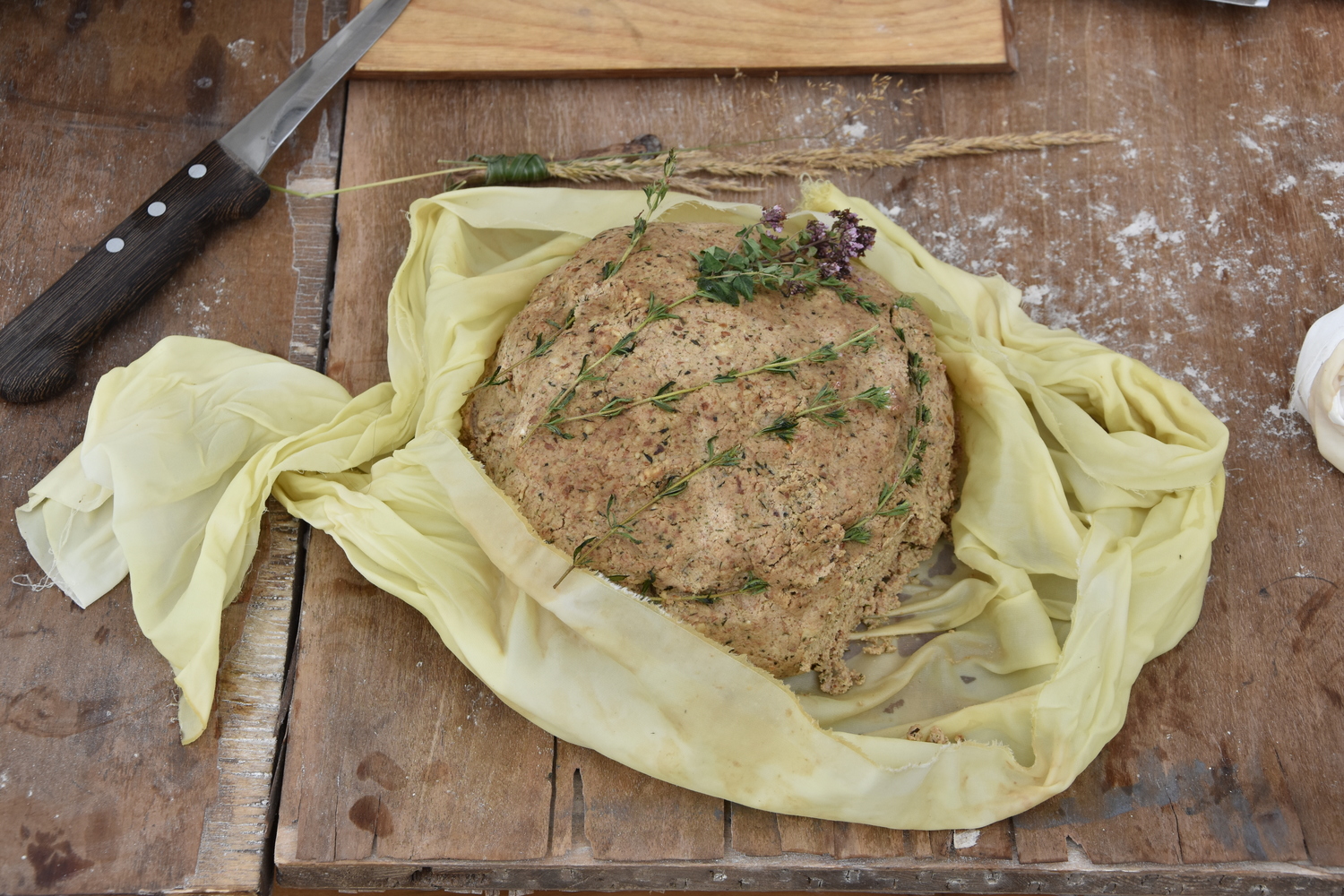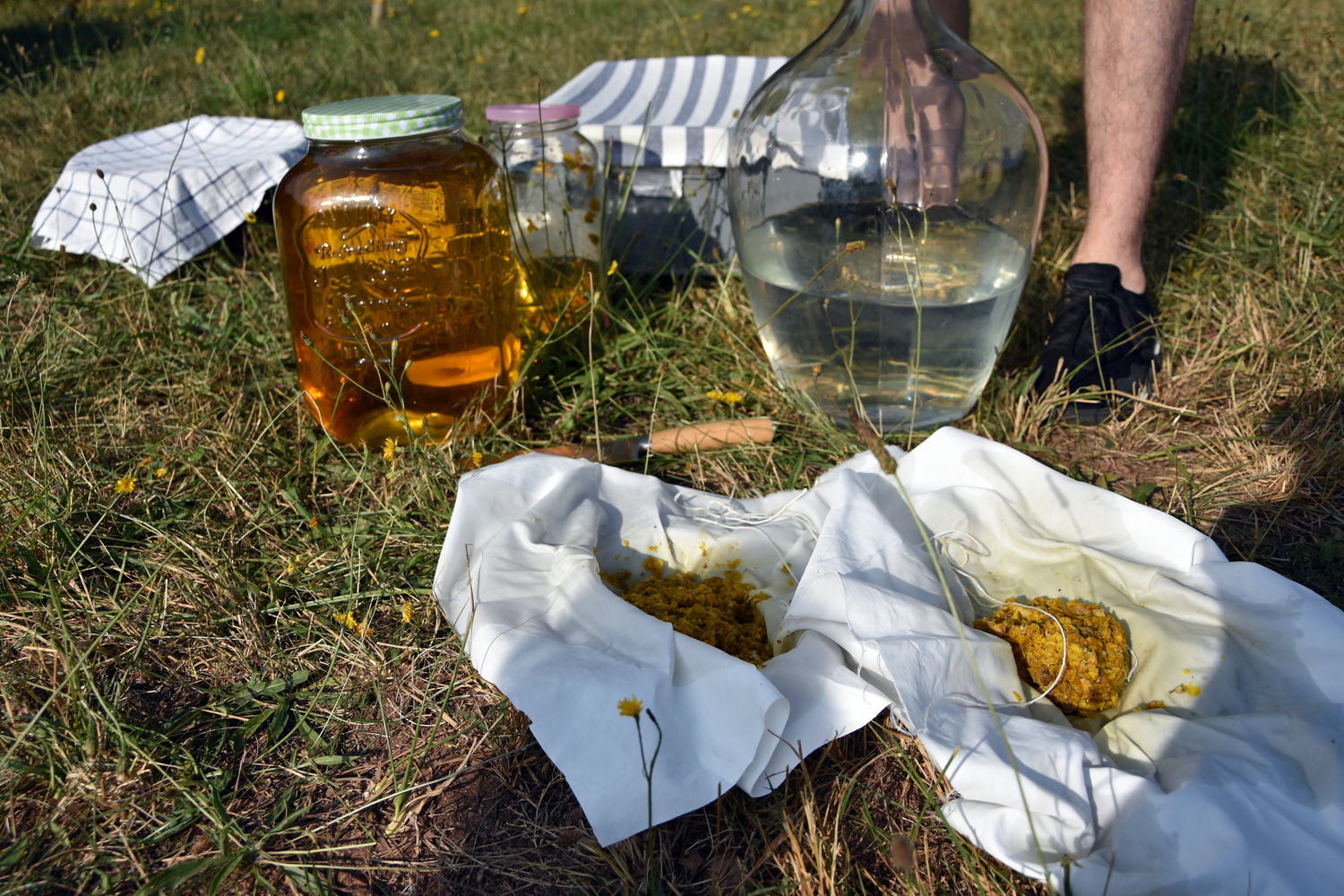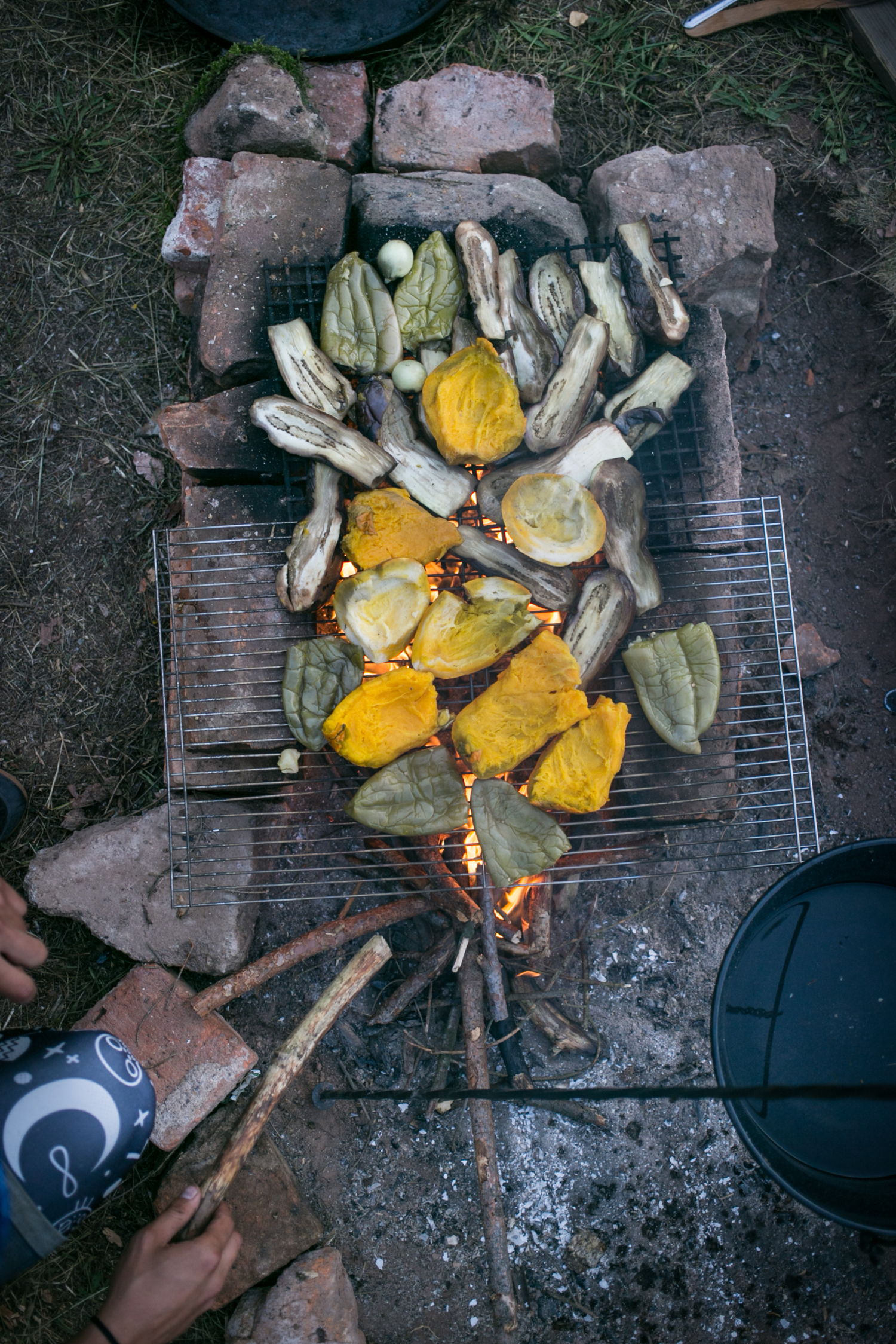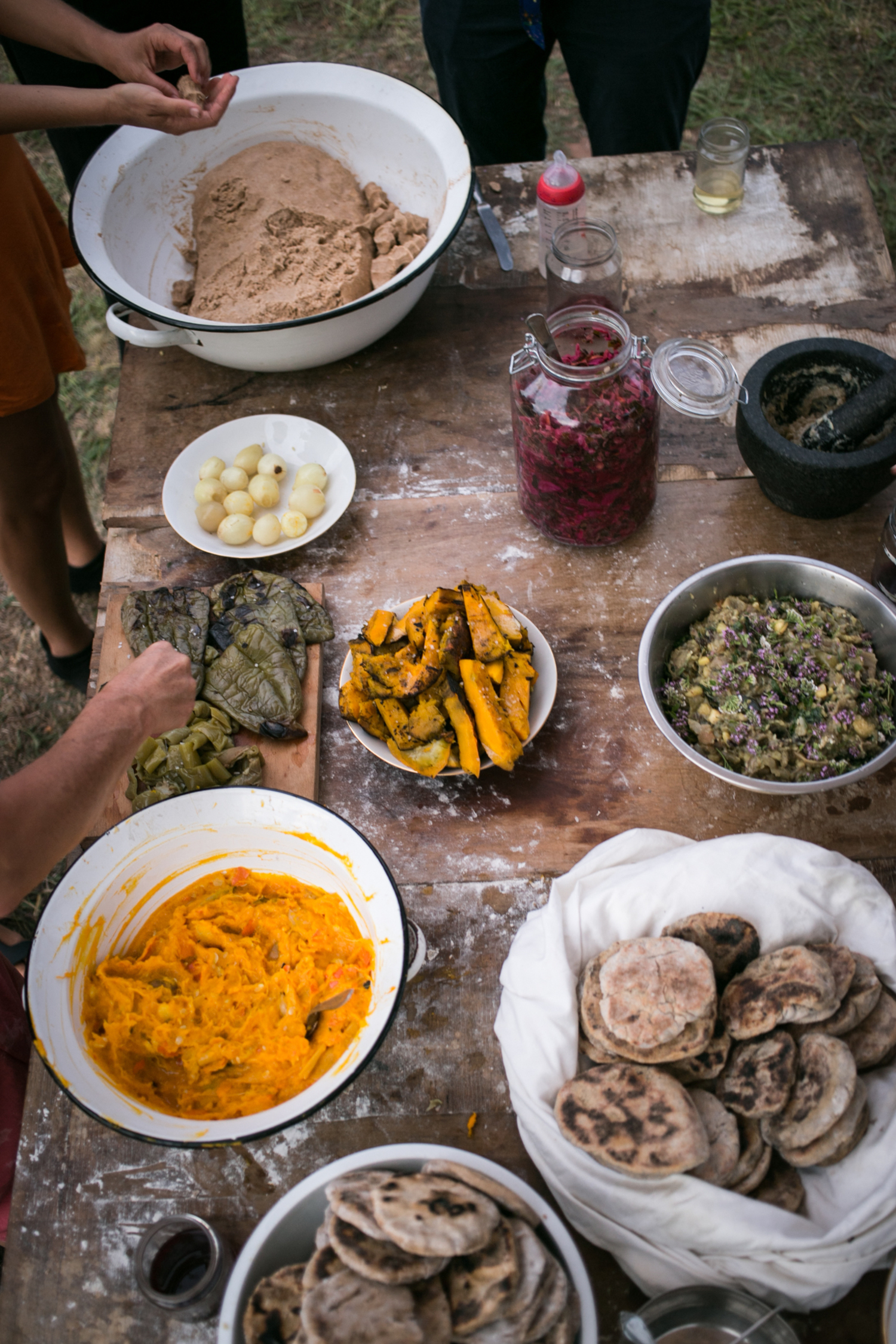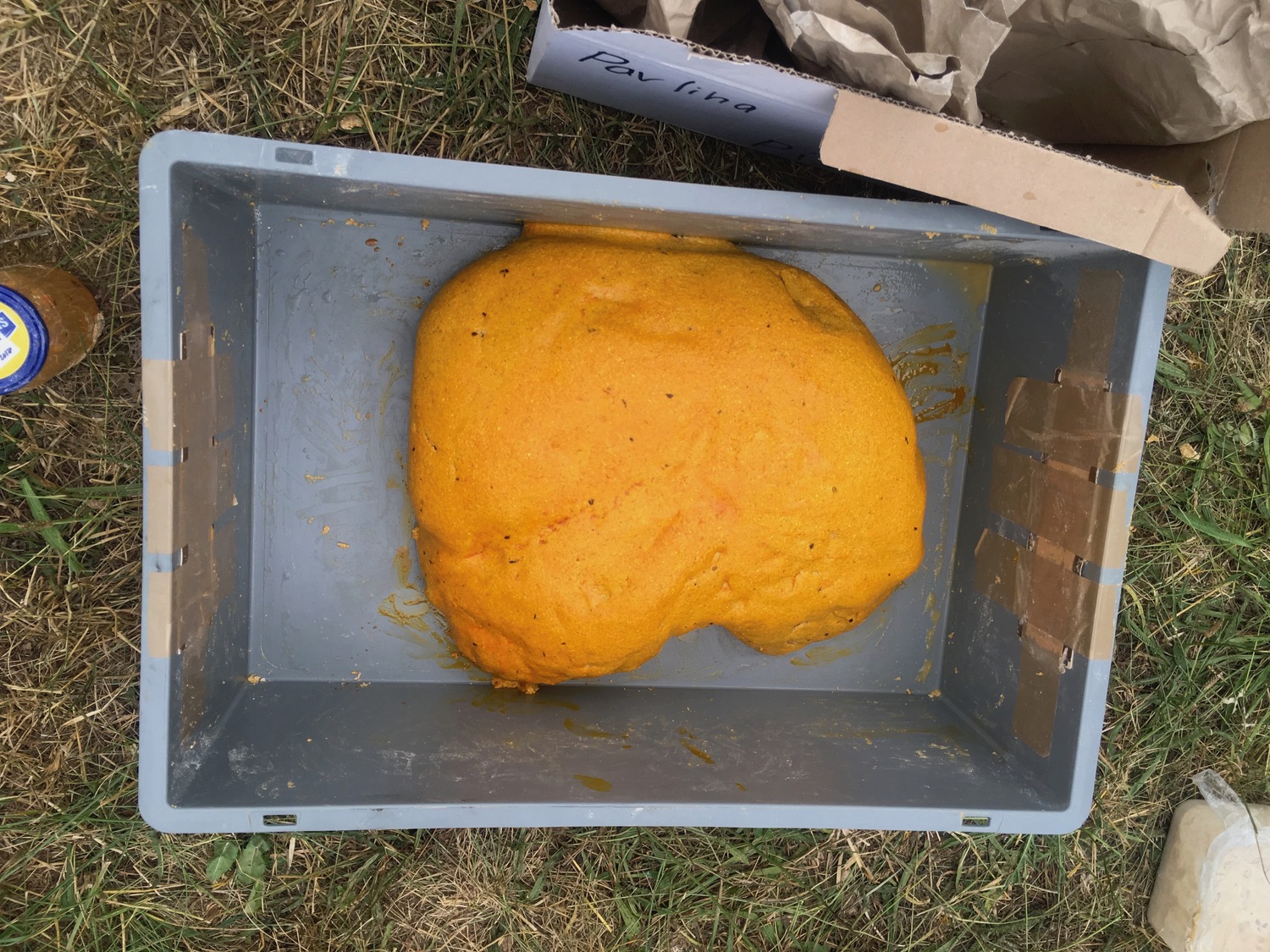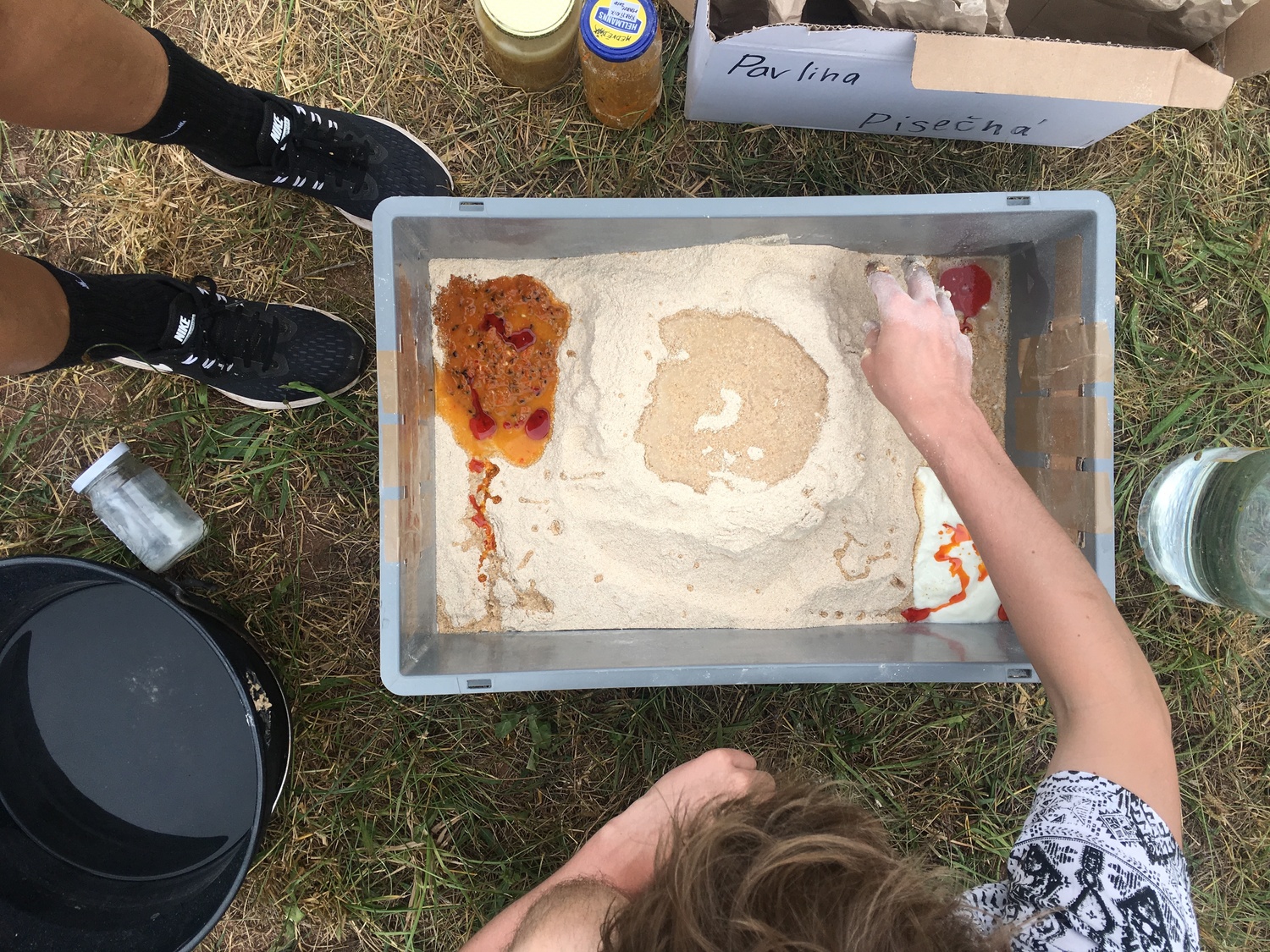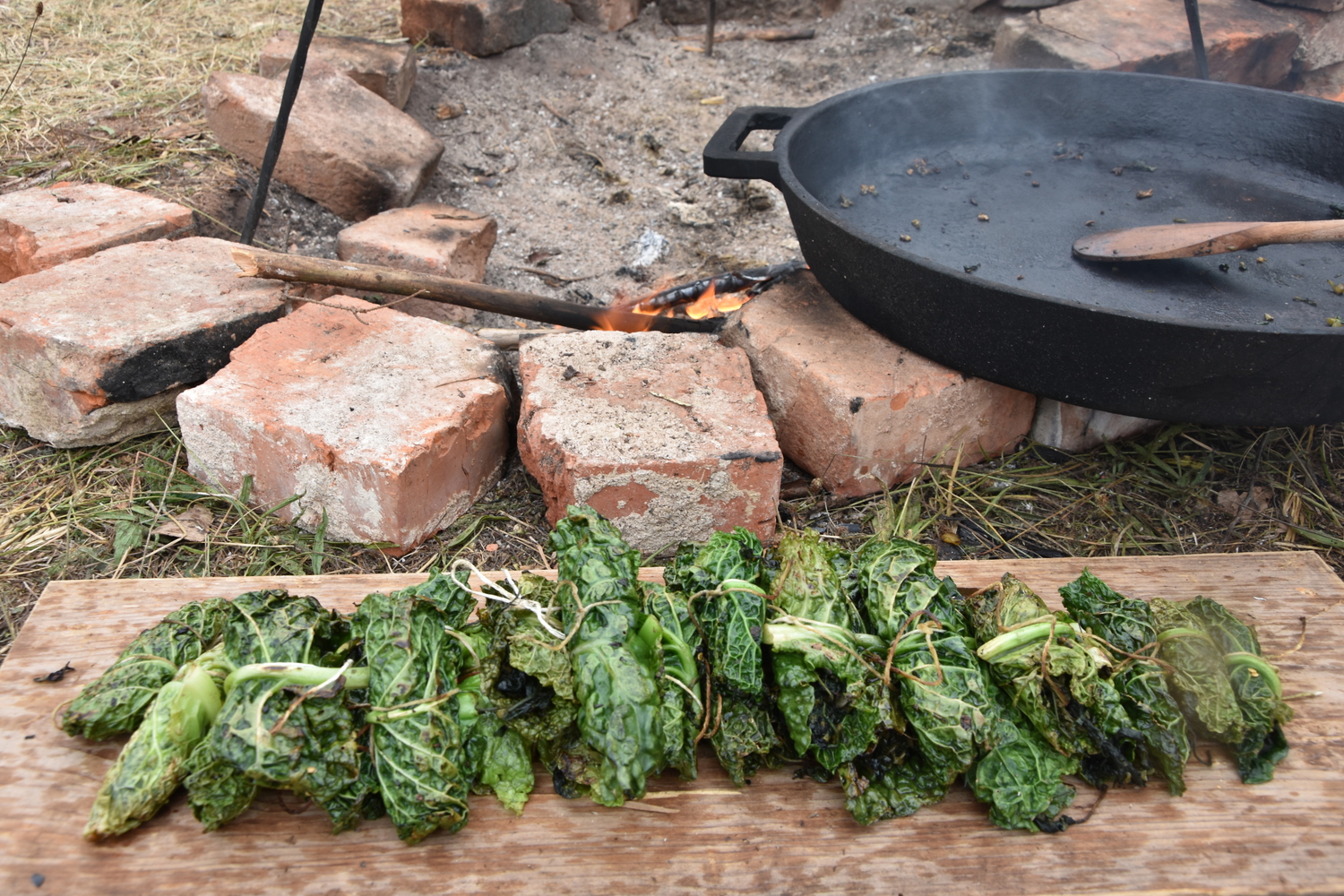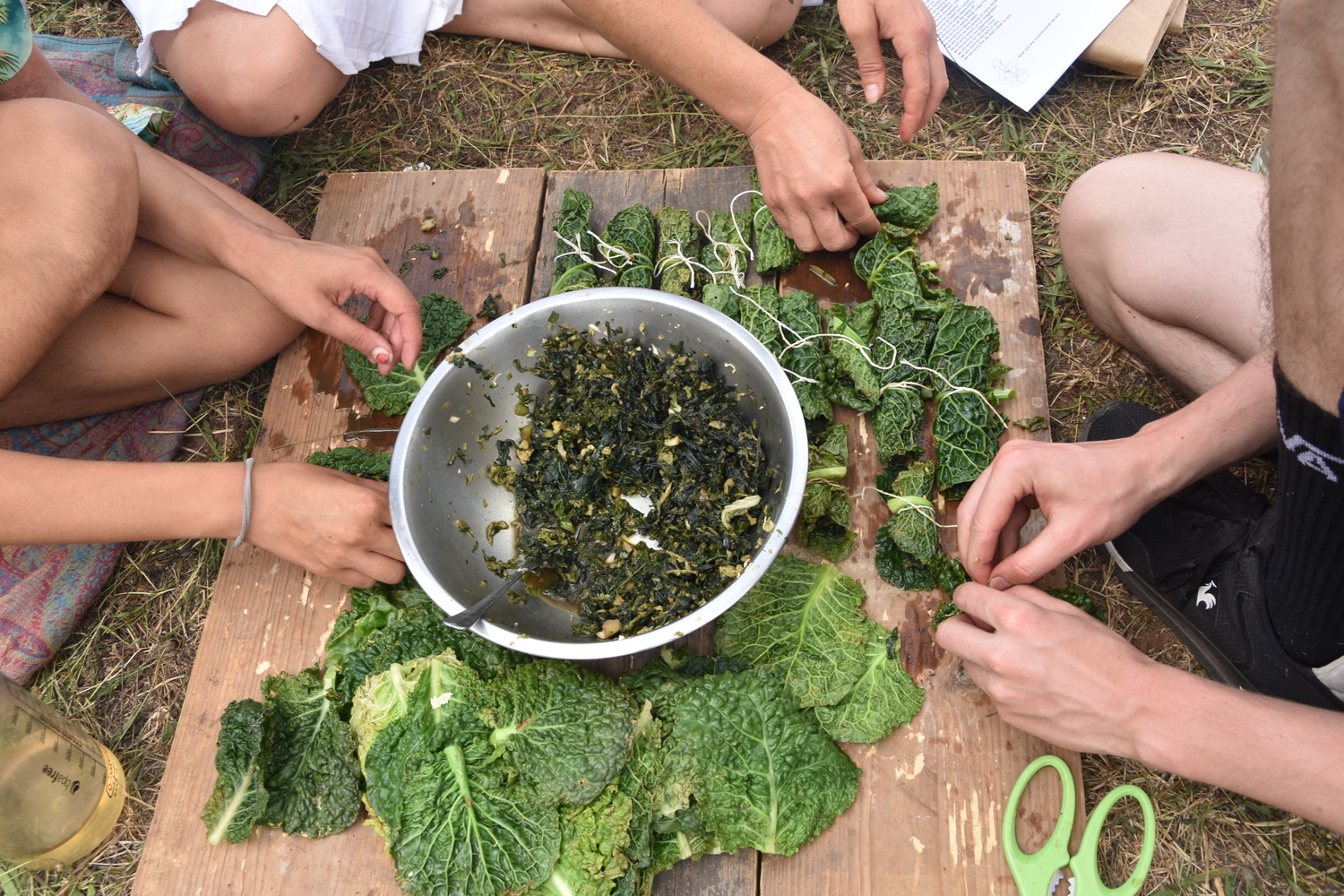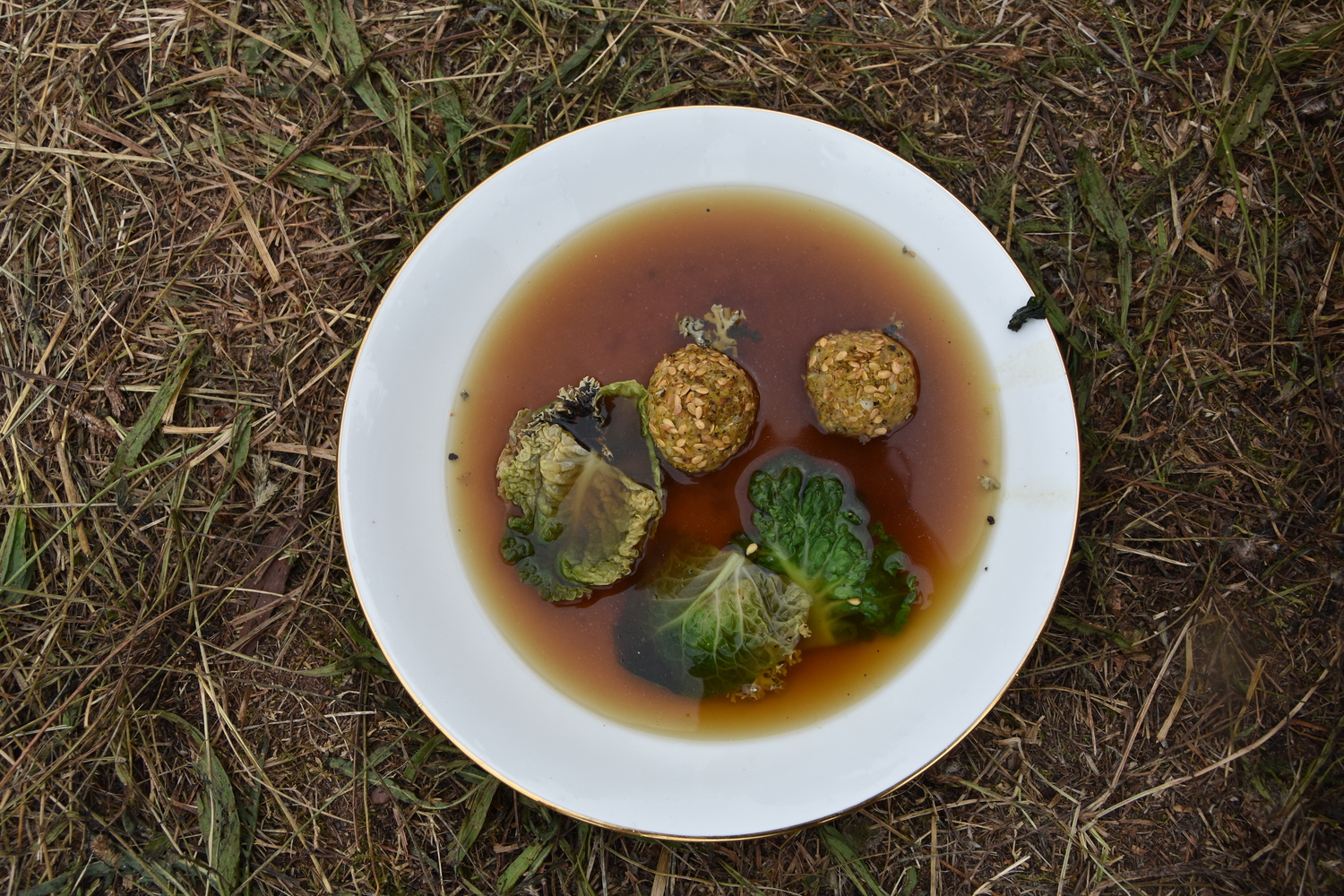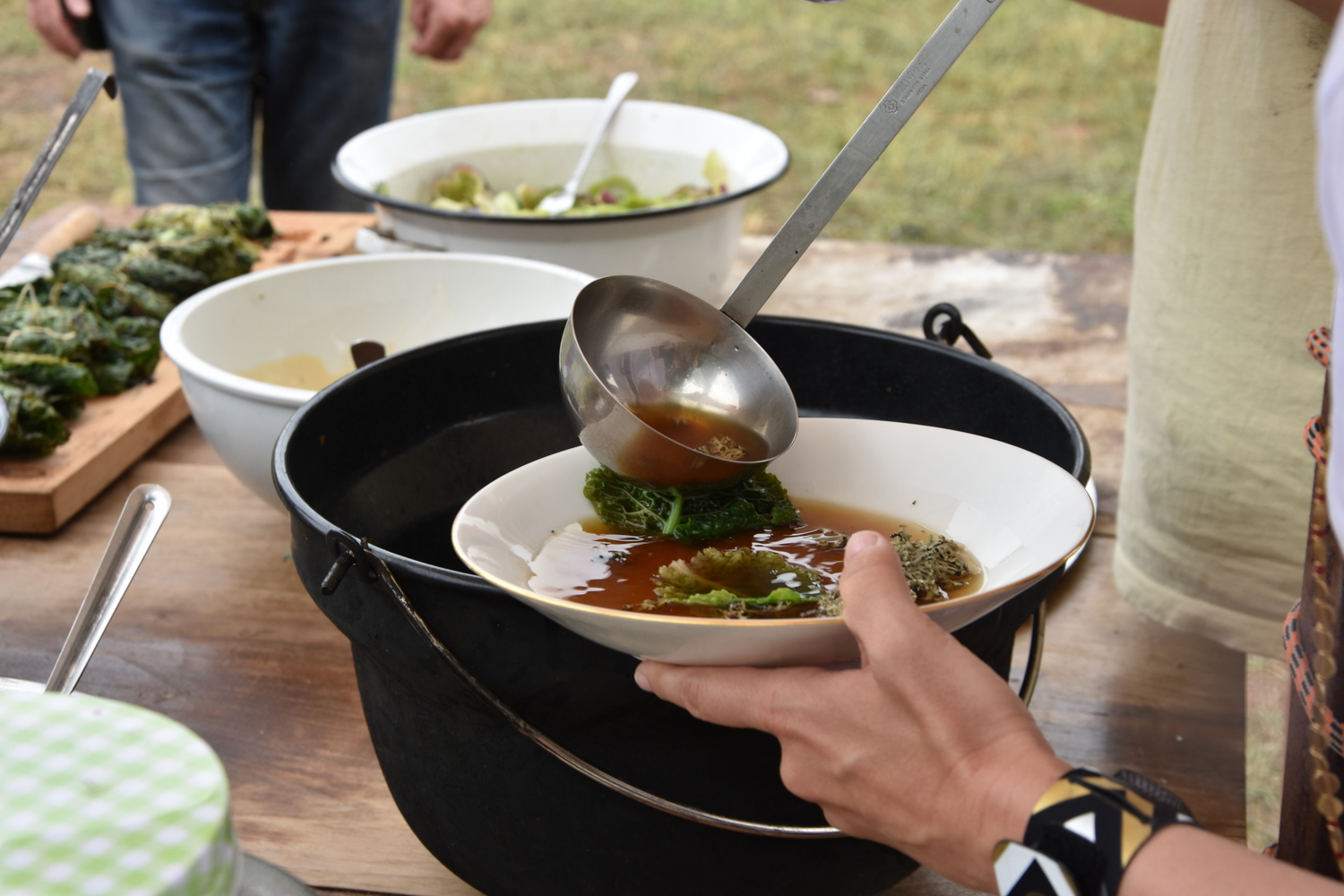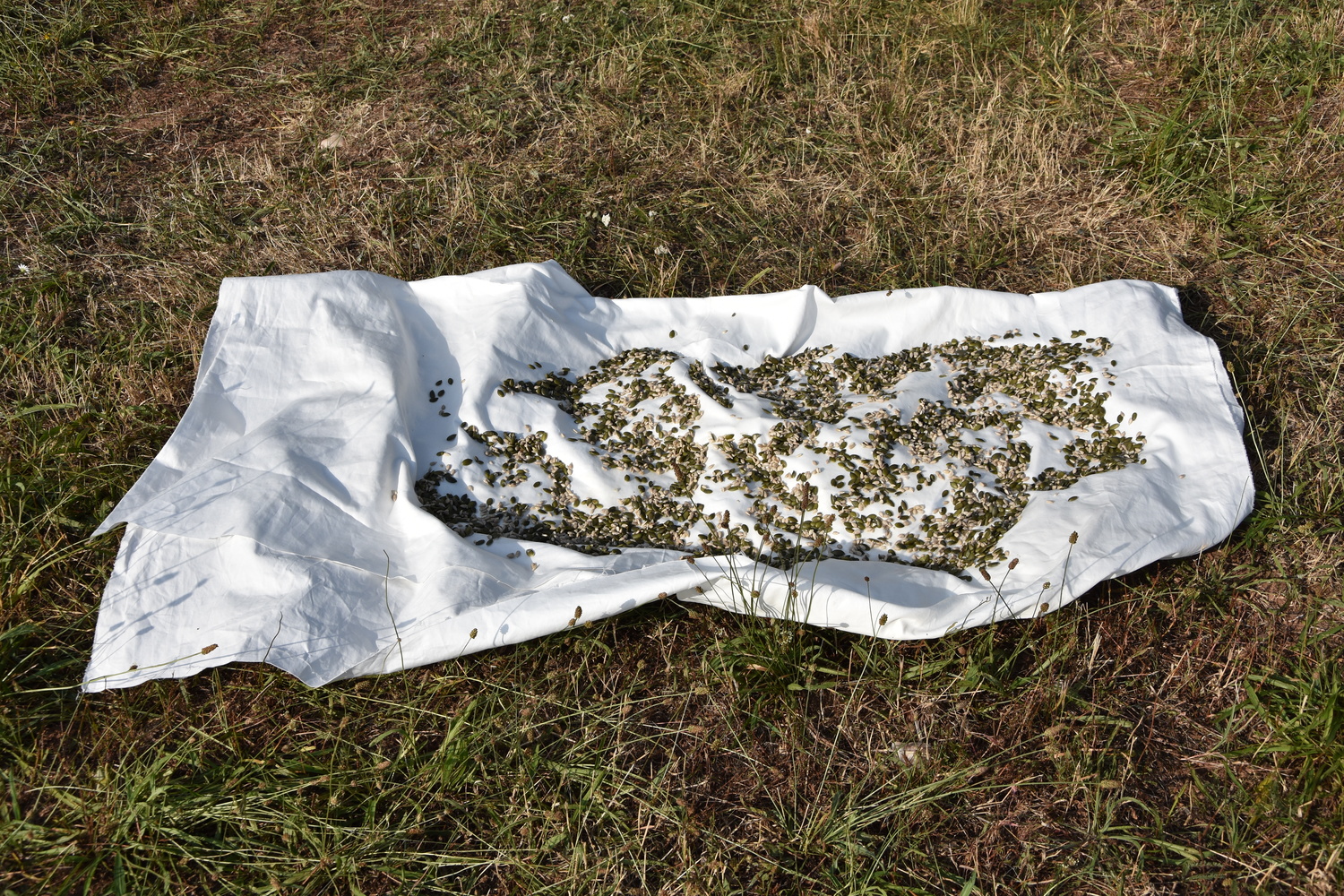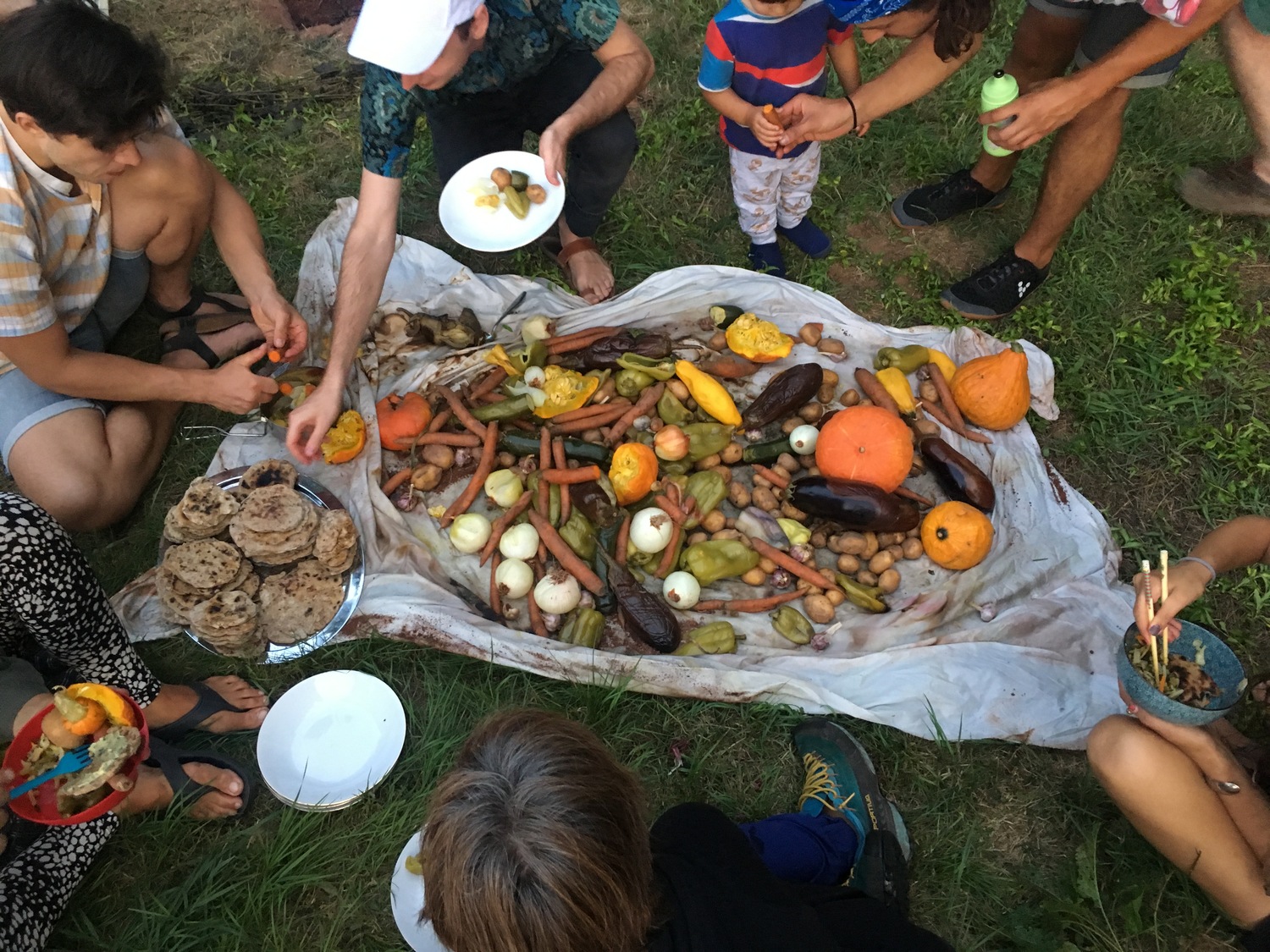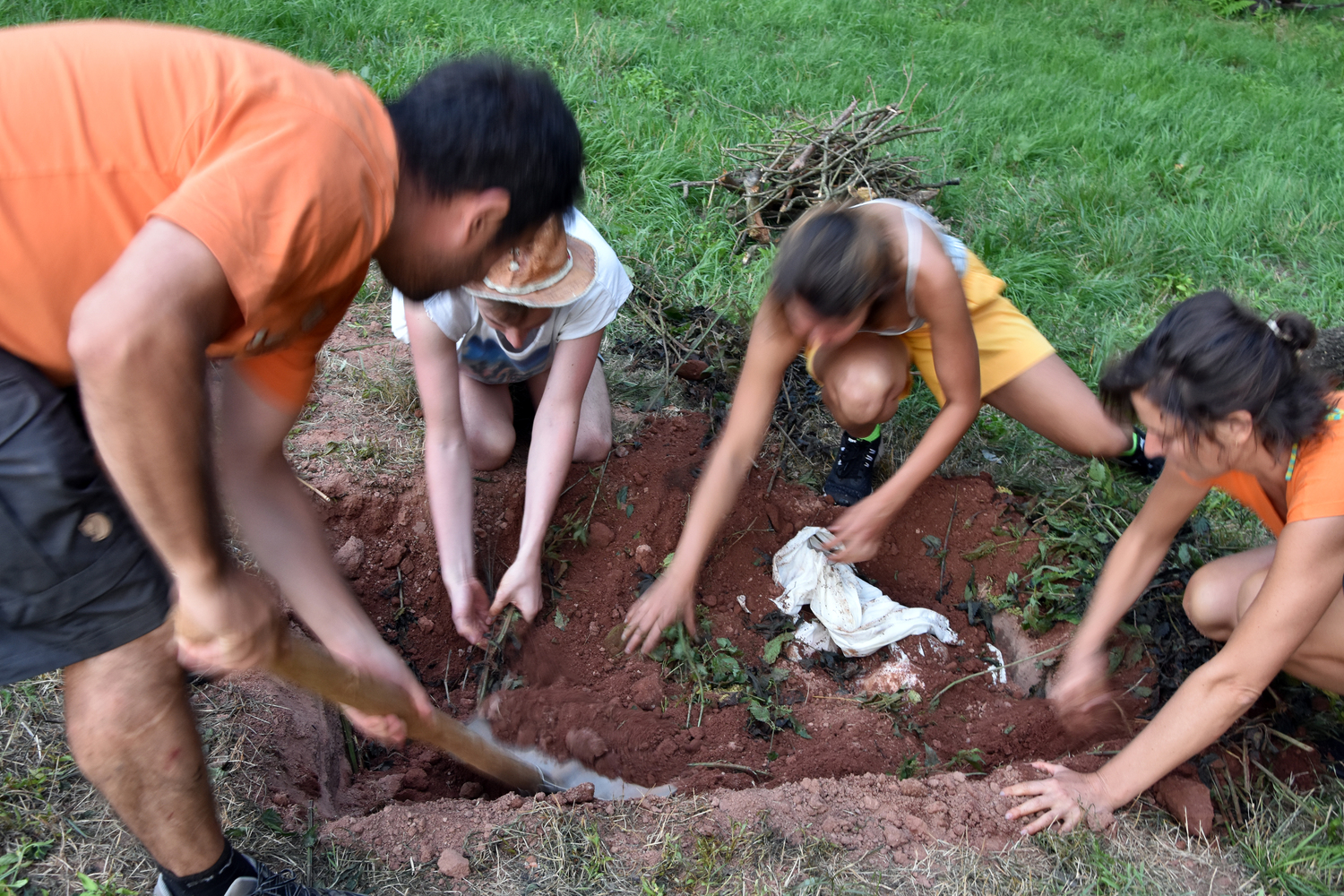Forest kitchen
The forest kitchen was formed as part of the programme of the symposium WE ARE THE FOREST: On Plant Intelligence and Interspecies Communication, which took place on 26-28 July 2019 in a forest and meadow plot near the village of Hnátnice in the Orlické Mountains.
Every day Zuzana Blochová, David Fesl, Adéla Korbičková and Pavlína Verbíková prepared a menu of herbs, plants and ingredients from the surrounding nature and Czech ingredients and products from organic farming, especially from the Orlické Mountains.
The forest cuisine is based on traditional food preparation methods such as soaking, fermentation, leaching, slow cooking and baking in the ground. It is loosely inspired by recipes from cookbooks focusing on nutrition, fermentation and traditional cuisine of the Bohemian Middle Ages, Swedish or Tibetan.
Forest Kitchen dishes are based on invisible preparation respecting traditional practices that improve the digestibility of ingredients and enhance or transform their nutritional value, which is further enhanced by specific combinations. Grains, legumes, nuts and seeds are the reproductive organs of plants. To protect themselves, plants therefore deposit anti-nutritional substances in them that reduce the availability of important nutrients and interfere with digestion. Anti-nutrients are significantly reduced by soaking, sprouting, fermentation and cooking.
Through the primacy of the nutritional value of food, his visuals work with earthy colour and seek the possibilities of uncontained and generous forms. It defies established food cultures, integrating ash, earth and natural ingredients such as moss, lichen, leaves, yeast and probiotic microorganisms. The forest kitchen works only with organic ingredients. Thus, it does not economically support the devastating impacts on the environment, water, soil and living organisms caused by the conventional agricultural industry, which uses toxic substances, antibiotics, hormones and genetically modified organisms to produce food for humans and animals.
Raw materials:
Grains, seeds, nuts, oils: PROBIO, Good Farm
Vegetables: Svobodný statek na soutoku, Ekofarma Horní Ředice, Zahrada Černíkovice
Dairy products: Ranch Bělečko, Ekofarma Horní Ředice
Spices: SONNENTOR
Wine: VELTLIN
Literature:
Fallon, Sally. Nourishing Traditions: The Cookbook that Challenges Politically Correct Nutrition and Diet Dictocrats, 2001.
Beranová, Magdalena. Jídlo a pití v pravěku a ve středověku, 2015.
Nilsson, Magnus. The Nordic Cookbook, 2015.
Katz, Sandor Ellix. Wild Fermentation: The Flavor, Nutrition, and Craft of Live-Culture Foods, 2016.
Longo, Valter. The Longevity Diet, 2018.
MENU
Friday 26 July 2019
Dinner
Vegetables roasted in a pit on nettles with butter, salt and herbs
Fermented vegetables, sourdough rye cakes with coriander and fennel
Drink of flowers and herbs macerated in local underground water
Vegetables roasted in a pit on nettles
Dig a pit approximately 100 x 70 x 50 (depth) cm. The excavated dirt will be kept next to the pit and will be needed to cover the roasting. Cover the bottom of the pit with large stones. On the day of baking, a fire must be lit in the pit about 8-9 hours before serving. It is important to keep the temperature high, the stones must be heated to a stable temperature. Then spread the coals evenly over the stones so that the temperature in the pit is the same everywhere.
On a cloth about 200 x 150 cm, prepare the vegetables, which are not cut or cleaned, but left whole as they are. Pumpkins, courgettes, aubergines, peppers, potatoes, onions, garlic and carrots. If possible, do not remove the stem from carrots.
Cover the coals in the pit with moistened nettles. We must act quickly so that the substance does not burn the vegetables. Place the nettles on top of the vegetables wrapped in the wet cloth and spread them evenly over the bottom of the pit. Place another layer of nettles on top of the vegetables and cover thoroughly with soil and smother.
Roast the vegetables in the pit for about 4-5 hours.
When the vegetables are cooked, invite people to the pit and dig the vegetables out of the pit in front of them. First with a shovel, then dig out the rest with your hands. Grab the cloth by all four corners and move it to the open grass and carefully unroll it. Everyone takes a piece of vegetable.
Butter with salt and hemp
Rub the butter with the freshly picked hemp and coarse salt. Serve in a bowl next to the vegetables.
Sourdough rye cakes with coriander and fennel
Sift the rye flour into a bowl and make a well in the centre of the mound. Place the sourdough starter in the indentation and feed with a little flour and honey. Add a little warm water. Leave to rest for 15 min. Then salt the flour, add the homemade kefir and start kneading with your hands. Knead until you get a consistency that is airy, soft and the dough squishy in the dough. It is important to aerate the dough properly on the strength of human hands.
Make a paste with the fresh coriander seeds, fennel sprigs and a little salt in a mortar. Gradually add the paste to the dough. Leave the dough to rise for at least 24 hours. Bake the pancakes dry in a cast-iron pan on the fire. Can be eaten hot or cold.
Fermented vegetables
Cut white cabbage, zucchini, cucumber, beetroot, flat-leaved parsley, spring onion, garlic, red onion, celery into thin noodles. Gradually add the vegetables to the bowl, where each batch is salted and massaged. We check the taste so that we do not over-salt the vegetables. When the vegetables start to release their juices, we squeeze them to extract as much juice as possible. Fill the vegetables with the juice into jars and seal them well so that the juice rises to the top. The jars should be almost full and all the vegetables submerged in their own juices.
Close the jar and put it in a dark place to ferment for about 10 days or more. Then you can serve the vegetables or keep them in a cool place.
Macerated cannabis and lemon balm, macerated calendula and milk thistle in underground local water.
Saturday 27 July 2019
Breakfast
Four-grain porridge with moss and leaves
Macerated divine tea
Four-grain porridge with moss and leaves
Soak the grains – buckwheat, oatmeal, barley and buckwheat in water with a little apple cider vinegar for 24 hours in advance in a 1:1:1 ratio. Also soak sunflower and pumpkin seeds in salted water for the same amount of time.
The next morning, rinse the grains, add water and start cooking. Salt and boil until a porridge is formed in which the individual grains are recognisable.
Rinse the sunflower and pumpkin seeds and dry them on a cloth in the sun. Add the flaxseeds to the seeds, which do not need to be soaked beforehand.
In the forest, collect dry autumn fallen birch and oak leaves and moss. Boil water. Put the leaves in a bowl and the moss in a sieve. Pour hot water over the moss and let it infuse for a while to make a forest broth.
Remove the still slightly liquid porridge from the heat and add a large piece of butter and honey.
Pour the leaf and moss broth into a bowl with a portion of the porridge around it. Sprinkle with the dried seeds.
Lunch
Sunflower and walnut oil
Sourdough spelt poppy seed pancakes
Pea porridge with wine, jam, nuts and spices (16th century)
Sunflower and walnut oil
Prepared 4 days in advance. Walnuts, especially walnuts, should ideally be kept in the shell, otherwise they spoil and turn rancid quickly. Before using them, shell them and soak them in salted water.
Soak the seeds and nuts separately in salted water for 24 hours. Then pour off the water, pound the seeds and nuts in a mortar to a fine pulp, which you mix with the probiotics, pumpkin or sunflower oil and salt.
Season the sunflower oil with dried chilli and calendula leaves. Season the nut spread with fresh thyme and plenty of dried delicatessen yeast.
Blend thoroughly to a gooey paste. Using your hands, knead the paste into a large loaf and wrap it in a cloth. Store the wrapped loaves in a stable warm place for three days. Serve in oil-soaked linen.
Sourdough spelt poppy seed pancakes
The day before, take a piece of rye sourdough and feed it with spelt flour to get it used to it. Sift the flour, make a well, add the sourdough starter and feed it with a little flour and honey. Pour in a drop of lukewarm water. Leave to rest for 15 min. Add kefir and lots of poppy seeds. Knead the dough and leave to rise in a warm place for 24 hours. Bake the pancakes dry in a cast-iron pan on the fire or on a hot stove. Serve the pancakes cold only.
Pea porridge with wine, jam, nuts, honey and spices
Soak shelled yellow peas in water for 24 hours. Change the water ideally three times. The next day, strain and rinse the peas. Put the peas in a pot of clean water and bring to the boil. When the peas start to boil, foam will form on the surface, which must be patiently collected and removed until the foam stops forming. Traditionally, foam is collected from all broths and cooked food because it contains digestive disruptors and impurities that detract from the palatability of the food. Then cook the peas slowly, stirring frequently, until the peas begin to break down. Gradually add the red wine, a larger quantity of pounded and pre-soaked walnuts, the salt and spices – pepper, fresh grated ginger, cinnamon and cloves. Remove from heat, let cool to body temperature, add butter and honey. Add honey only after the dish has cooled to body temperature so that the enzymes and some vitamins in the honey are not destroyed. This recipe is inspired by a 16th century Czech pea porridge from the book Eating and Drinking in Prehistory and the Middle Ages.
Salad of fresh vegetables
Tear lettuce leaves, cut cucumbers and peppers. Pour in sunflower and pumpkin seed oil and apple cider vinegar. Toss, do not salt.
Fermented vegetables
Red, yellow, white and red and white beetroot, flat-leaved parsley, red and white cabbage, courgette, radicchio, celery, garlic and onions.
Dinner
Pumpkin and courgette pulp and aubergine and potato pulp baked in the ground on nettles
Onions and peppers in oil
Roasted barley dumplings with black tea, salt and butter (Tibetan tsampa)
Fermented vegetables
Pumpkin and courgette pulp and aubergine and potato pulp roasted in the ground on nettles
Roast pumpkin, zucchini, eggplant, garlic, scallions and potatoes in a pit. Divide the roasted vegetables and mash the squash and courgettes separately and the aubergines and potatoes separately. Add the garlic, salt, sunflower oil, butter, bay and lemon balm.
Onions and peppers in oil
Peel the onions and put them on a plate with the peppers. Thoroughly coat with sunflower oil and season with salt. Chop with a knife.
Roasted barley cones with black tea, salt and butter (Tibetan tsampa)
Soak the barley grains in water for 24 hours. Rinse and gradually scald the grains with hot water. Let the scalded grains dry for about 30 min in the sun. Dry roast the dried grains in small batches until they are bronze in colour. Grind the roasted grains into a smooth flour. Mix the roasted barley flour with strong Pu-erh black tea, salt and butter. Press the mixture into cones with the imprint of a clenched fist.
Pu-erh black tea with butter and salt
Brew the tea in a kettle on the fire. Season the two infusions with a lump of butter and a pinch of salt. This tea is used to steep barley cones.
Sunday 28 July 2019
Breakfast
Barley orange sea buckthorn pancakes with honey and walnuts
Fresh goat’s cheese with chives and lavender
Homemade cow’s milk kefir
Barley orange sea buckthorn fritters with honey and walnuts
Take a piece of rye sourdough the day before and feed it with barley flour to get it used to it.
Sift the flour, ground from roasted barley grains, and make a dent, add the sourdough and feed it with a little flour and honey. Leave to rest for 15 min. Add kefir and homemade sea buckthorn jam (long-cooked sea buckthorn berries). Knead the dough and leave to rise in a warm place for 24 hours. Brush the dough with sea buckthorn oil to prevent it from drying out. Bake the pancakes dry in a cast-iron pan over a fire or on a hot stove.
Brush the baked pancakes with sea buckthorn oil, drizzle with honey and sprinkle with crushed walnuts, which have been soaked beforehand, and toast them in the same cast-iron pan.
Fresh goat cheese with chives and lavender from Horní Ředice Ecofarm
Homemade cow’s milk kefir from Ranch Bělečko
Lunch
Boiled green beans, yoghurt dressing with delicatessen yeast
Broth of bean pods and wild dried mushrooms with four-grain porridge dumpling and kale leaves and lichen
Cabbage rolls with stewed nettles
Fresh vegetable salad
Bean pods
Trim the tops off the beans and put them in water to boil. Once boiled, drain and do not pour off the stock. Put the beans in a bowl, season with salt and mix with pumpkin seed oil.
Bean and wild dried mushroom broth with four-grain porridge dumplings and kale leaves and lichen
Pour the dried wild mushrooms into the bean broth and start cooking. When the mushroom broth is thick enough, add the lichen (Terchova bubble) and small kale leaves.
Prepare the dumpling from the leftover four-grain porridge. Crush saffron, colored pepper, salt and dried flaxseed in a mortar. Shape the mixture into small dumplings and carefully coat them with the loose mixture. The dumplings should be heavily peppered on the outside to flavour the mushroom broth.
Serve as a low soup with two spiced dumplings and steamed kale leaves.
Yoghurt dressing with delicatessen yeast
Stir a generous amount of delicatessen yeast into the white yogurt. Season with salt and stir until smooth.
Cabbage rolls with braised nettles
Place the whole kale in boiling water. Take the cabbage out and tear the leaves right down to the stem. Set the larger leaves aside for the rolls. Chop the smaller leaves and the stem and put them in a bowl.
Pick a large quantity of nettles and tear the leaves from the stems. Heat the sunflower oil in a saucepan over the heat and fry the scallions until they glisten. Add a little pepper. Scatter the nettle leaves over the onions, stir and pour in the mushroom stock. Cover with a lid, stir occasionally and simmer until the nettles darken and soften like spinach. When the nettles are soft, add the chopped kale, a little stock and stir. Finally, add plenty of butter, season with salt and add the chopped bay. Let the mixture cool for a while. Stuff the cooled mixture into the prepared cabbage leaves and tie the rolls with string. Fry the rolls in sunflower oil in a cast-iron pan on the fire.
Pickled cucumbers and courgettes with carrots, onions, garlic, coriander seeds and flat-leaved parsley
Cut the cucumbers and courgettes into larger pieces so that they are easy to eat with your hands. Cut the carrots into smaller pieces. Put everything in a large jar. Add the garlic cloves, sliced onion and spring onions. Coriander seeds and pepper. Dissolve the salt in cold water and pour the salty solution over the whole jar. Store the pickled vegetables in a dark place for 3 days. Then move it to a cold place and let it stand for 6 more days.
Fresh vegetable salad
Chop the cucumbers, peppers and kohlrabi. Pour in sunflower and pumpkin seed oil and apple cider vinegar. Toss, do not salt.
Forest cuisine. WE ARE THE FOREST: On plant intelligence and interspecies communication. Photo: Dita Lamačová and Stan Baranski. 2019





